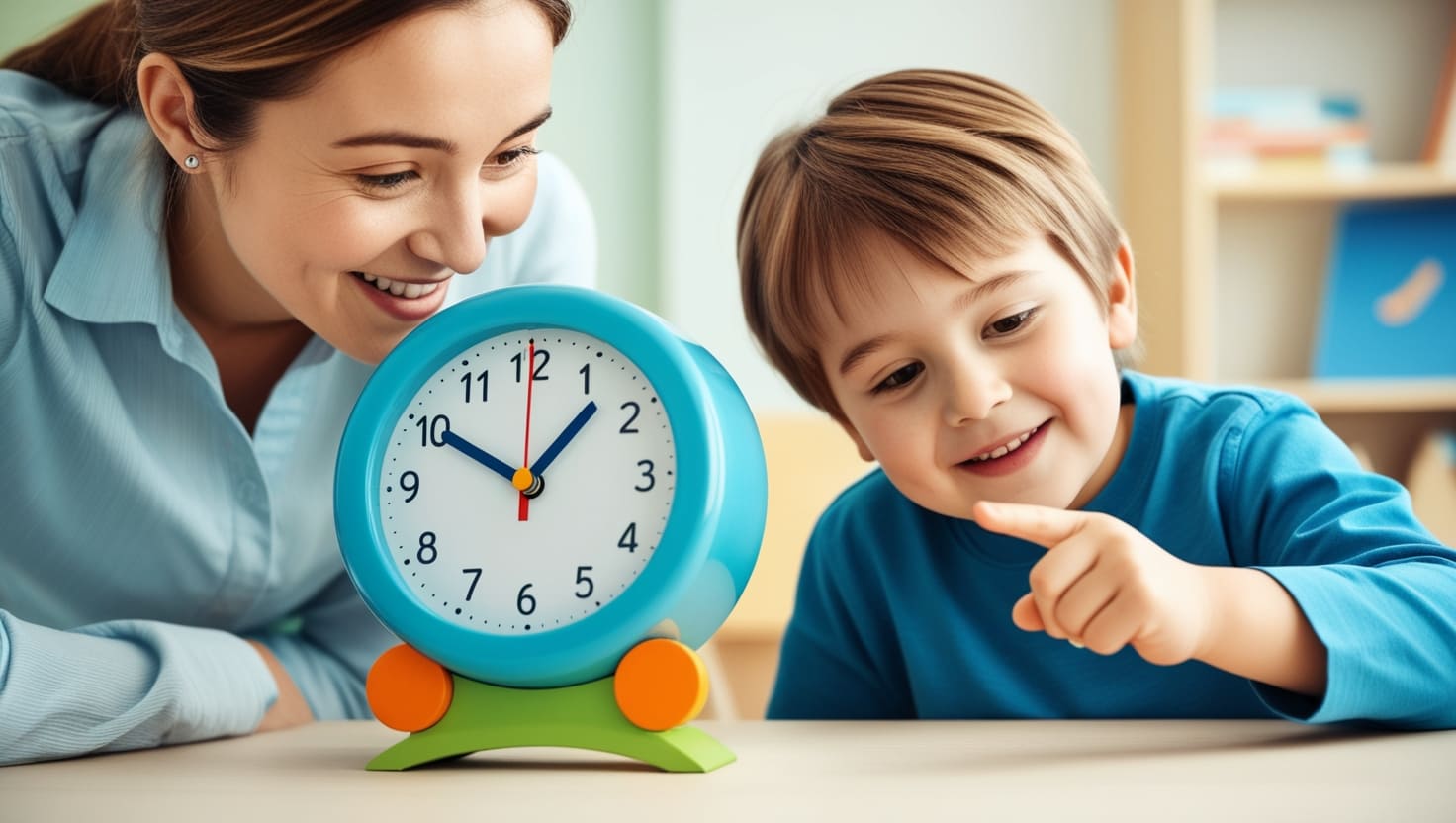Blog
How to Teach Your Child the Concept of Time Easily

Do you find it difficult to explain time to your child? Concepts like later, in five minutes, or tomorrow can be surprisingly abstract for young minds. That’s because children perceive time differently—they live in the moment, and the passage of time isn’t something they can easily see or measure.
But don’t worry. With a mix of consistency, visual aids, and relatable daily routines, you can help your child grasp the concept of time in a way that feels simple and concrete. In this article, we’ll share five effective, hands-on methods to teach your child time using tools you already have at home.
Tip 1: Use Daily Routines to Represent Time
Children thrive on routine—and routine is one of the best ways to introduce the passage of time.
- Break the Day into Parts: Use natural markers like morning, afternoon, evening, and night. Say things like, “After breakfast, we go to school,” or “At bedtime, we brush our teeth.”
- Label Events Consistently: Use time-related language like “before,” “after,” and “soon” throughout the day. This repetition helps children connect activities with time sequences. Example: “We’ll read a story after your bath.”
- Create a Visual Schedule: Make a picture chart showing your child’s daily activities—waking up, eating, playtime, nap, dinner, and bedtime. Hang it where they can see it every day and refer to it together as the day progresses.
These consistent cues make time feel less abstract and help your child anticipate what happens next—an important early step in time management.
Tip 2: Introduce Timers and Countdowns
When children can see time moving, they begin to understand it better. Timers provide a visual and auditory cue that time is passing.
- Use Visual Timers or Sand Timers: Tools like hourglasses, countdown apps, or physical timers show the passage of time. Let your child watch as the sand runs out or as the timer ticks down.
- Set Time Limits for Activities: Say, “You have 10 minutes to play,” and use a timer to signal the end. This helps your child internalize how long 10 minutes feels.
- Countdown Transitions Together: For smoother transitions, try saying, “Five more minutes of play… now three… now one…” This gives your child time to mentally prepare for what’s next.
Timers are especially useful for preschoolers who struggle with sudden changes in routine. Over time, they begin to associate timer signals with real durations.
Tip 3: Use Clocks and Watches in Play
Make learning time a playful and hands-on experience. Incorporating clocks into games makes the concept feel fun and non-intimidating.
- Introduce Toy or Paper Clocks: Use toy clocks with movable hands or make your own out of paper plates. Practice setting times for events like “lunch at 12” or “bedtime at 8.”
- Pretend Play with Time Concepts: Encourage roleplay scenarios where your child is the “teacher,” “chef,” or “doctor” who needs to schedule things. Ask, “What time is the teddy bear’s check-up?”
- Talk About Real Clocks: Point to digital or analog clocks in the home and mention the time when starting an activity. For example, “It’s 7 o’clock. That means it’s bath time!”
Children gradually start recognizing number patterns and time intervals when clocks are part of their everyday environment and play.
Tip 4: Relate Time to Familiar Events
Connecting time to your child’s everyday experiences is a powerful way to help them understand how long things take and when they happen.
- Use Storybooks About Time: Read books that walk through a day in the life of a child or animal character. Pause to discuss what the character does in the morning, afternoon, and evening.
- Connect Time to Favorite Shows or Meals: Say, “Your cartoon starts at 6 o’clock,” or “We eat dinner at 7.” Repeated exposure to specific times linked with activities helps solidify understanding.
- Describe Durations with Everyday Comparisons: Say things like, “It takes two minutes to brush your teeth,” or “The car ride is as long as three songs.” Comparing time to something your child can feel or measure makes it more real.
As they grow, children will begin to estimate time better and feel more in control of their daily routines.
Tip 5: Teach Time Vocabulary Gradually
Understanding the language of time is just as important as reading a clock. Introduce time-related words slowly and in real-life context.
- Start Simple: Begin with easy terms like “now,” “soon,” “before,” “after,” and “later.” Use them consistently during routines: “Before lunch, we wash our hands.”
- Use Sentences to Provide Structure: Say, “After we read a book, we’ll go outside,” or “Before your nap, we’ll have a snack.” Linking time words with actions gives them clear meaning.
- Introduce Calendars for Longer Time Frames: Use a calendar to count down to holidays, birthdays, or family outings. Mark “today,” “yesterday,” and “tomorrow” with stickers or drawings to help your child visualize time across days.
When time-related language is woven into daily life, your child picks up the concepts naturally and with better understanding.
Teaching time may seem tricky at first, but with a little patience and creativity, it becomes a fun and rewarding part of your child’s learning journey. Through consistent routines, timers, clocks, and relatable experiences, your child will begin to understand the passage of time—minute by minute, hour by hour, and day by day.
Keep it playful, repeat key ideas often, and celebrate the small moments of understanding. Whether it’s reading a story about time or watching sand fall through a timer, every little activity helps your child grow in awareness and independence. Time might be abstract—but learning it can be very real, engaging, and joyful.










